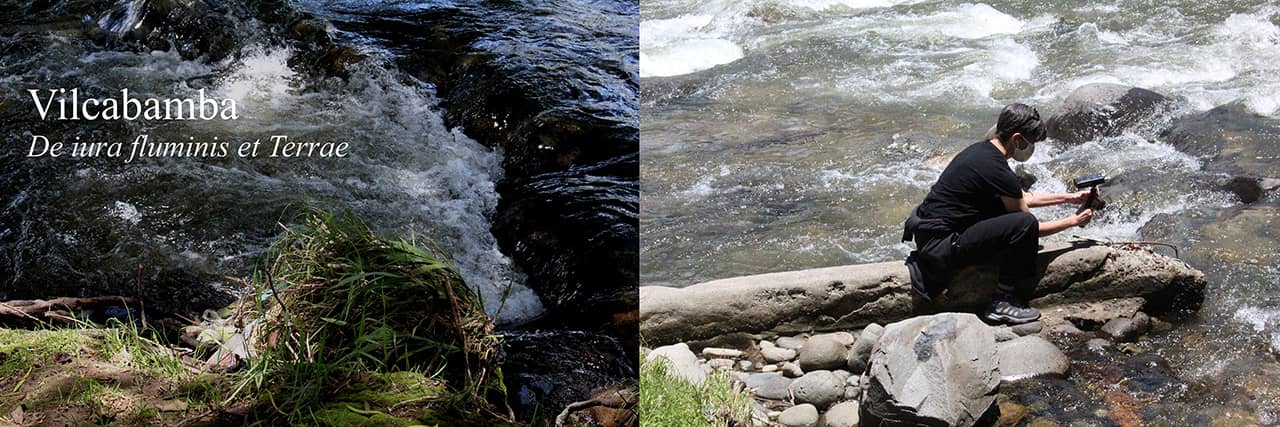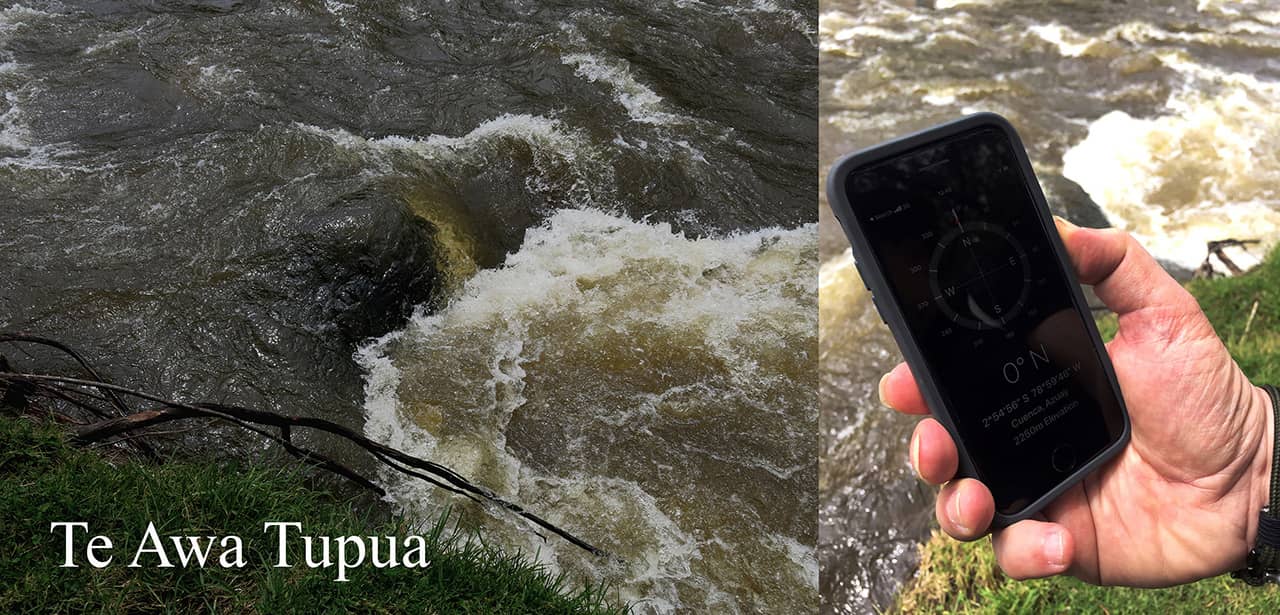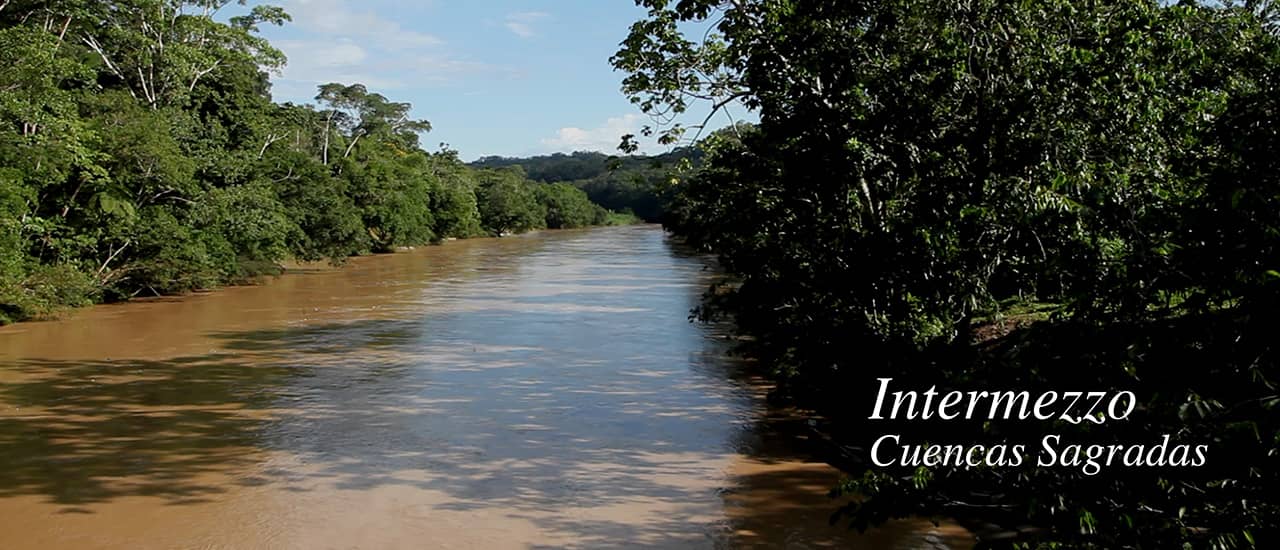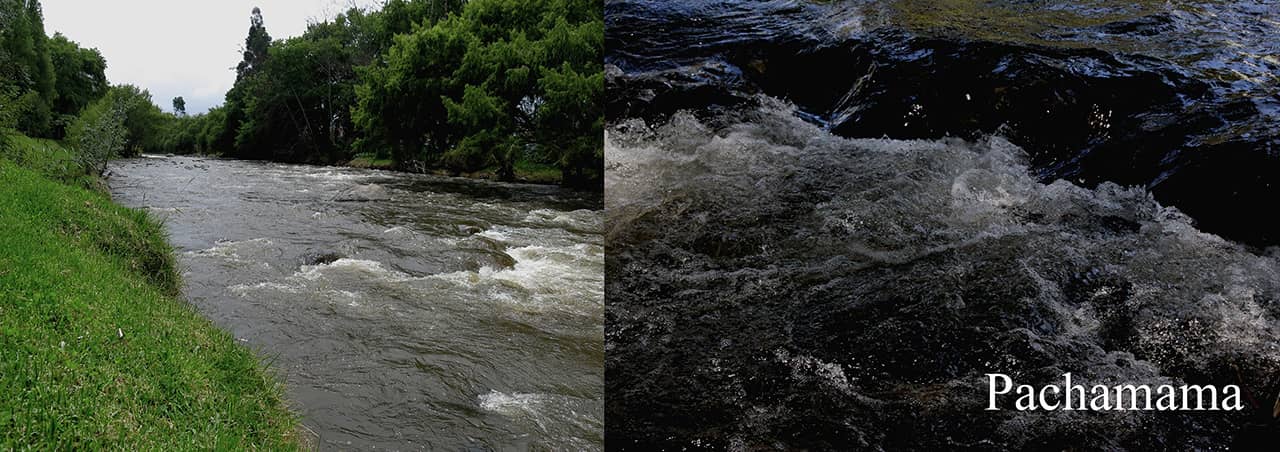VILCABAMBA
DE IURA FLUMINIS ET TERRAE
A collaborative arts project to bring the voices of rivers to the 23rd Sydney Biennale, March 2022.
Vilcabamba, de iura fluminis et Terrae is an artwork made of a video and a music composition. The images of the Vilcabamba river are accompanied by a music piece composed by Daniel Mancero, with the notes produced by the sonification of GPS coordinates of rivers with legal personhood, as well as of the rivers of the Sacred Headwaters of the Amazon, and the ecosystems that were brought to the attention of the International Tribunal on the Rights of Nature. The music piece is composed of two Movimenti and an Intermezzo: Te Awa Tupua, Cuencas Sagradas, Pachamama.




“Ko au te awa. Ko te awa ko au” (I am the river, and the river is me)
The first act “Te Awa Tupua”* is played on a score composed of the notes corresponding to the GPS data of rivers with legal personhood or whose rights are recognized: Vilcabamba river (Ecuador, the first river with legal personhood in the country, whose Constitution is the only one in the world to recognize the Rights of Nature), Whanganui river (New Zealand, the first river with recognized legal personhood in the world), Yarra river (Australia) Atrato river, Cauca River, Magdalena River, Coello Combeima and Cocora Rivers, La Plata river (Colombia), Yamuna river, Ganges river (India), Turga river (Bangladesh), Magpie river (Canada), and others.
*After Te Awa Tupua (Wanganui River Claims Settlement) Act 2017. The expression “Te Awa Tupua” is the Maori way of viewing the river as a whole, an integrated entity from the mountains to the sea. The concept behind the “Te Awa Tupua” is that it is not a geographical location, but rather a recognition of the river system as a whole, with specific interests and intrinsic values of its own.


The intermezzo, titled Cuencas Sagradas (notably the Sacred Watersheds) of the three Amazon rivers, Napo, Pastaza, and Marañón, considered as sacred by indigenous peoples, and hence, having intrinsic rights, although not officially recognized.


The second act “Pachamama” composed of the score containing notes corresponding to the GPS coordinates of the ecosystems and related cases brought to the Tribunal on the Rights of Nature in the course of the years.
“Commissioned by the Biennale of Sydney with generous support from the Commonwealth through the Council on Australia Latin America Relations, which is part of the Department of Foreign Affairs and Trade.”